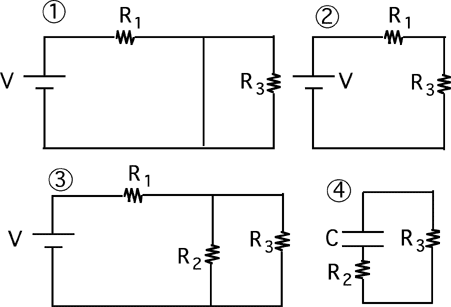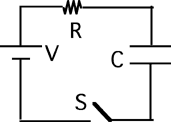Goal: Reason regarding capacitors
Source: 283-585 RC equivalent circuit at early time
Consider the following circuit.

The capacitor is uncharged when the switch is closed at t=0. Which
circuit is equivalent to this circuit for the instant immediately after
the switch is closed?










Commentary:
Answer
(3) Some students misunderstand the statement that capacitors behave
initially as a short circuit and select #1 or #2.
This item is best used in conjunction with the next one. Both should be
asked before discussion of either to reveal whether students just have
the behaviors reversed or evidence a more serious problem.